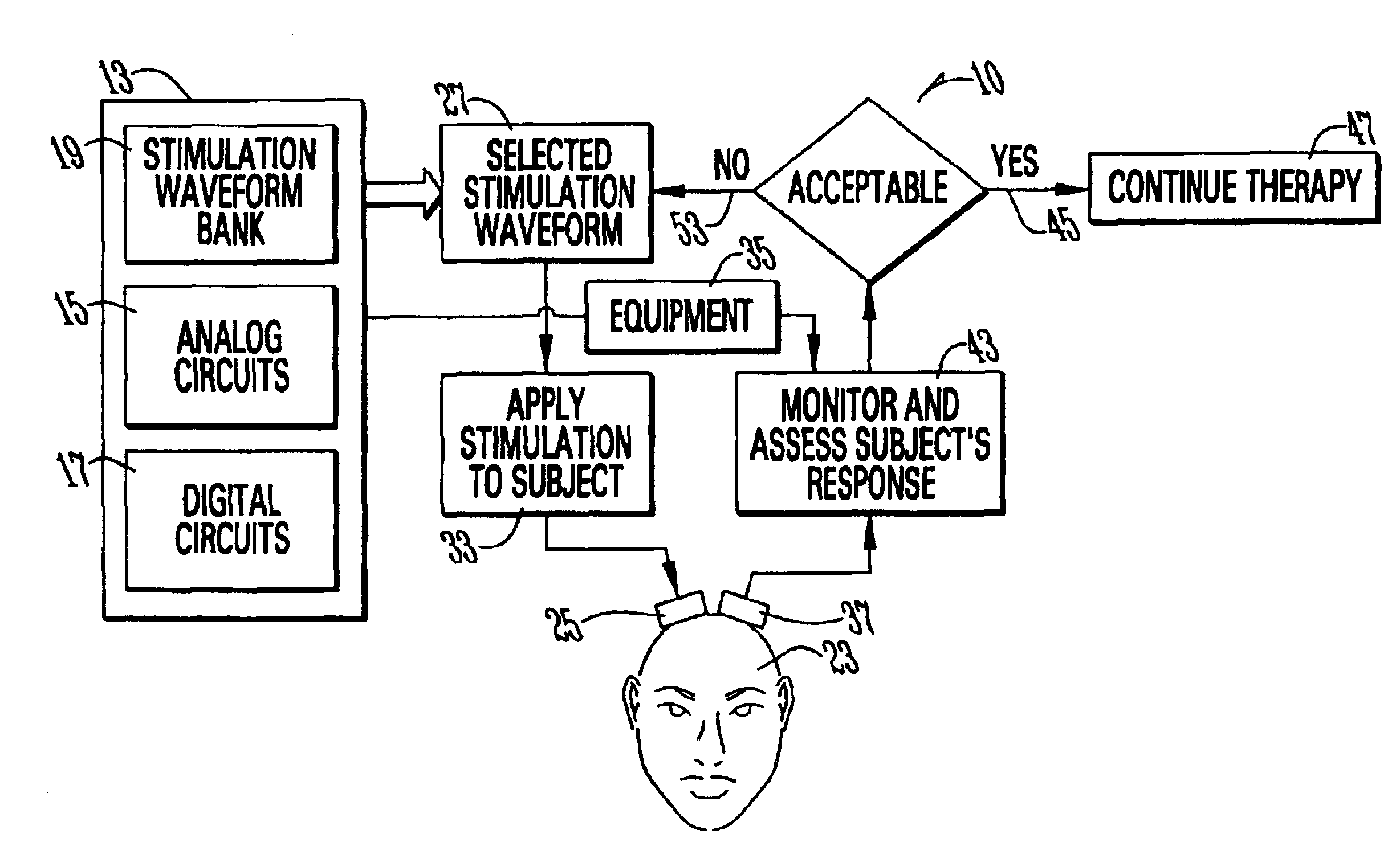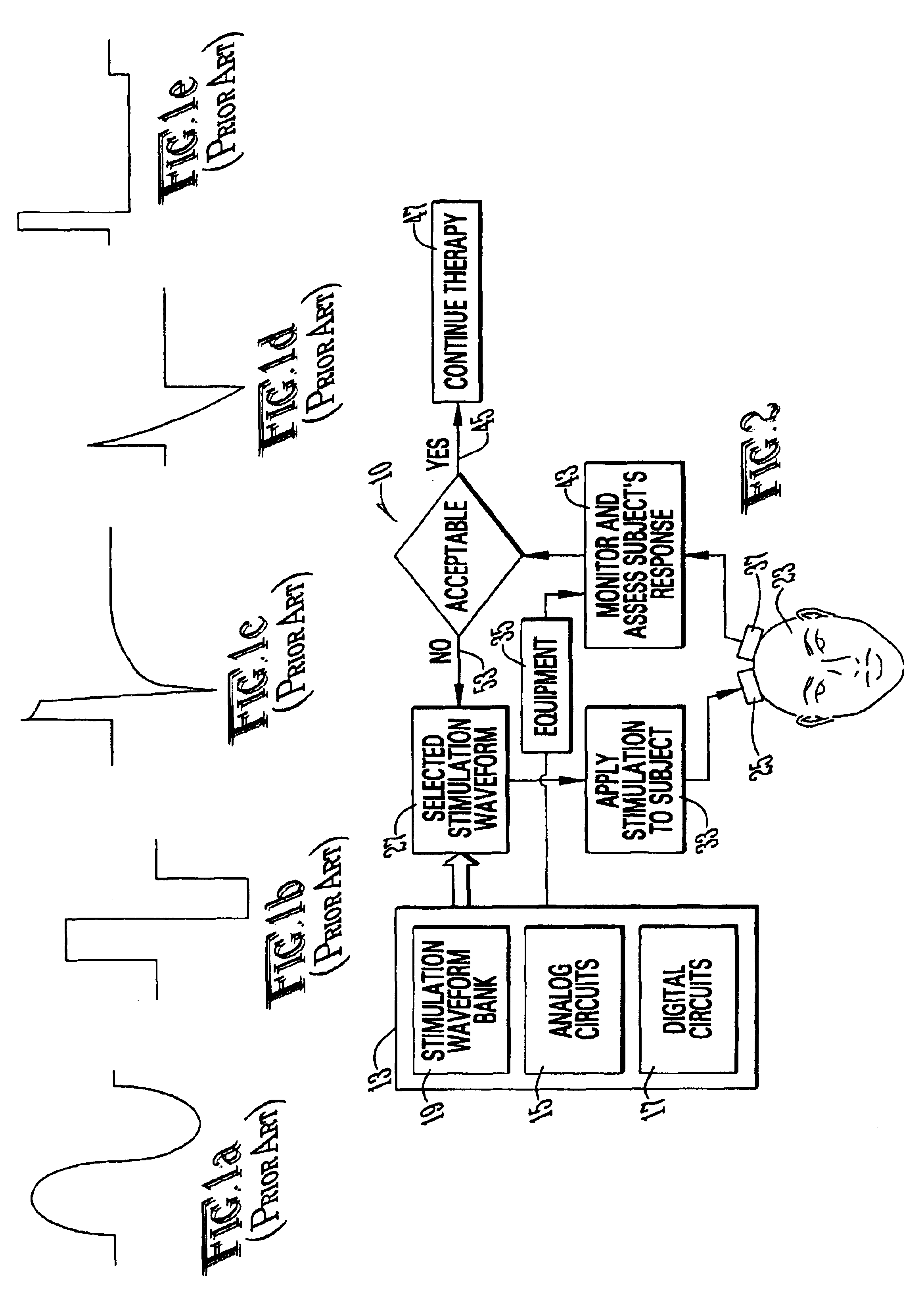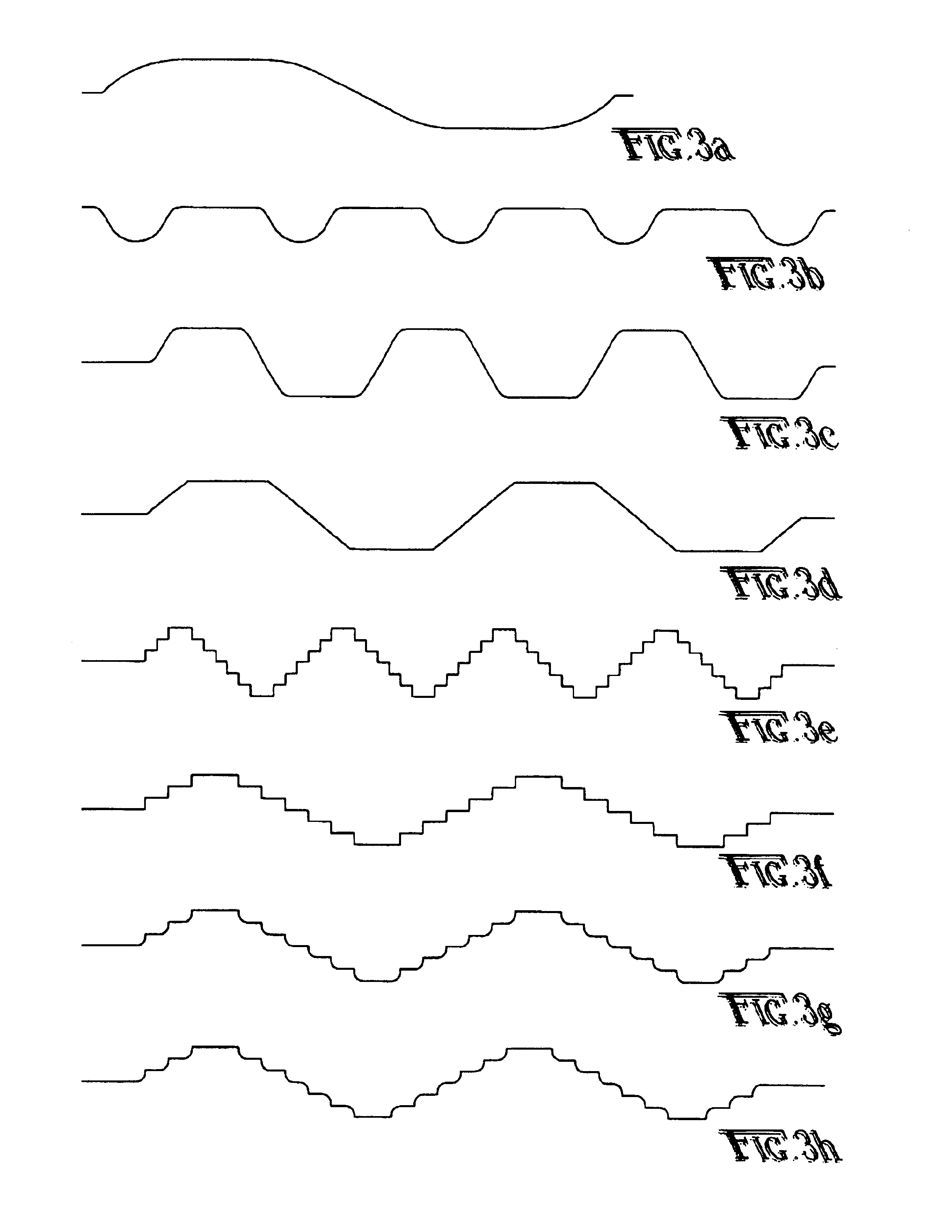The most common tool to assess this is electrical stimulation; however, since electrical currents can increase or decrease the excitability of
brain tissue, they must be used judiciously and with great care to decrease the probability that they would significantly alter excitability in transient or permanent ways, rendering the
estimation of seizure probability invalid or superfluous.
It is invalid because it artificially and markedly alters brain excitability, thus introducing a large bias.
It is unsafe because AD's may evolve into seizures and because repeated electrical stimulation of AD's, as required in that teaching, may result in “kindling” which would manifest as an increase in seizure frequency or intensity or as new seizure types through induction of new epileptogenic sites.
However, there is also preliminary evidence that
low frequency stimulation (˜1 Hz) reduces the probability of seizure generation.
(a) The degree of spatial and
temporal resolution required to generate a “current curtain” to contain seizure spread is unattainable as recording or sensing is done from the
cortical surface from where precise localization of seizure onset is not possible. For a further discussion of the limitations of recording BEA only from the
cortical surface, see U.S.
patent application Ser. No. 10 / 622,238 entitled “Unitized
Electrode with Three-Dimensional Multi-Site, Multi-
Modal Capabilities for Detection and Control of
Brain State Changes” and filed concurrently herewith.
(ii) Given the limited spatial resolution of the Fischell et al method, the probability that the tissue, which generates spontaneous seizures, overlaps or is fully congruous with the tissue that is excited to generate after-discharges as required for
efficacy, is low.
The limited spatial resolution is further compounded by the fact that Fischell et al teaches the use of separate detection and stimulation electrodes which, although not taught by that reference, must be perfectly aligned in the radial direction to avoid unnecessary impairment of
temporal resolution with
resultant undesired
delay of detection and intervention.
The end result is that electrical stimulation as taught by Fischell et al is unlikely to be delivered to the seizure onset site with the
degree of precision required to be efficacious and the built-in
delay between detection and stimulation may be such that the proposed “curtain” of
electrical current, even if effective which is unlikely, will not be set in a timely manner.
Therefore, the validity of the premise upon which the Fischell et al method rests, is questionable; and
For example,
brain tissue is neither homogeneous nor isotropic, which is likely to result in unevenness in
current density, direction and velocity of formation of the “curtain,” which may allow passage of
seizure activity into surrounding tissue.
Also, due to the
anisotropy of
brain tissue, the axis of polarization is unlikely to be uniform or have the same orientation for all stimulated tissue, a factor that decreases
efficacy since the orientation of this axis in relation to the anatomical orientation of the neuropil determines the degree or extent of the effect on neuronal activity.
Without the existence of a closed boundary around the estimated location of the focus, this is practically impossible because it needs the presence of unrealistically large
implanted electrodes.
(f) The
current density in brain tissue is not uniform along the path of the current flow and hence the path is not a straight line.
Consequently, formation of a “curtain” of
depolarization is difficult to attain and impossible to be certain as to its location.
In addition, that reference does not teach: (i) critically important parameters such as duration of the “curtain” required to block and prevent recurrence; nor (ii) how to depolarize in a “sheetlike” manner, rather than in bulk, the involved tissue.
Precise delineation of an “epileptic focus” is not possible using electrodes and methods as described therein.
The Fischell et al teaching of separate sensing and stimulating units adds unnecessary bulk and
processing complexity The therapeutic ratio of such an arrangement, defined as benefits / adverse effects or therapeutic ratio, appears to be unacceptably low, in light of the spatial incongruence and temporal
delay that the Fischell et al approach introduces and the bulk / complexity mentioned immediately hereinbefore.
 Login to View More
Login to View More  Login to View More
Login to View More 


